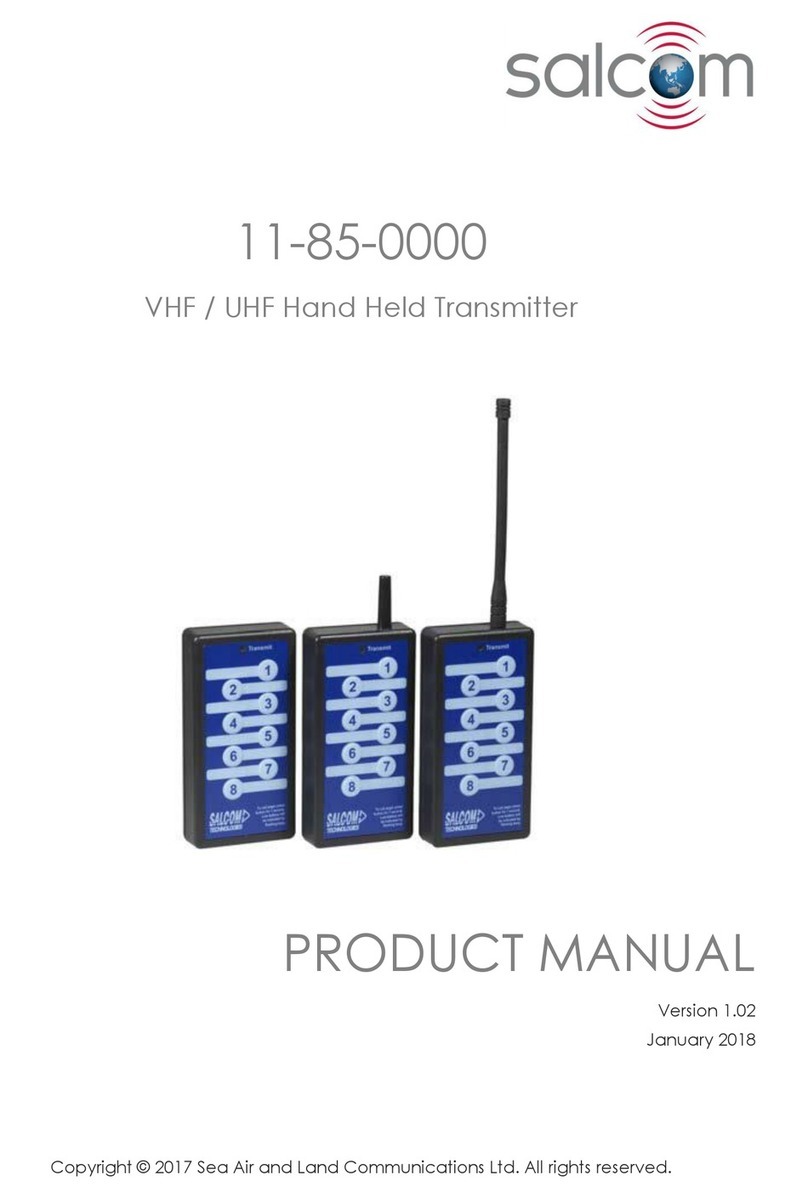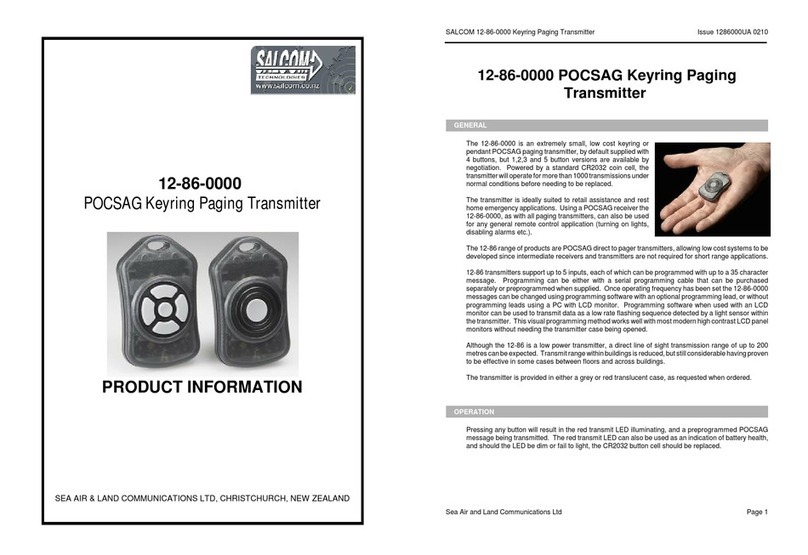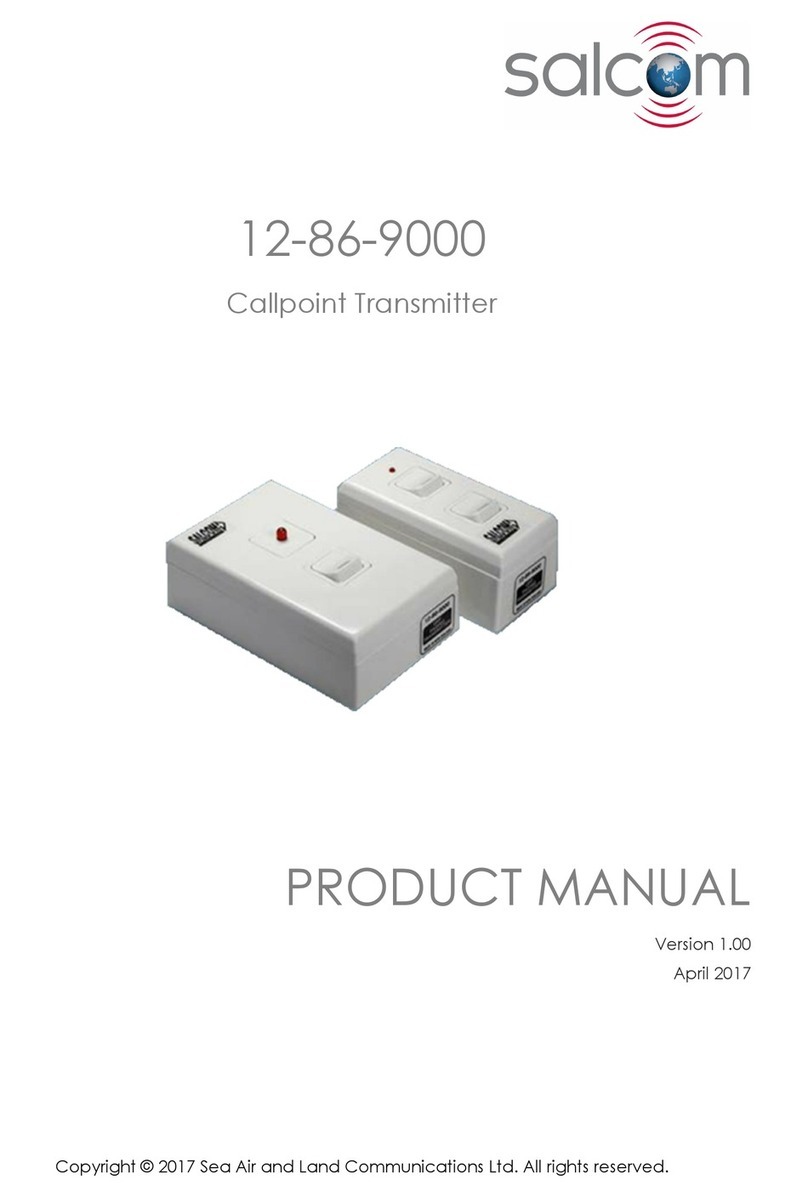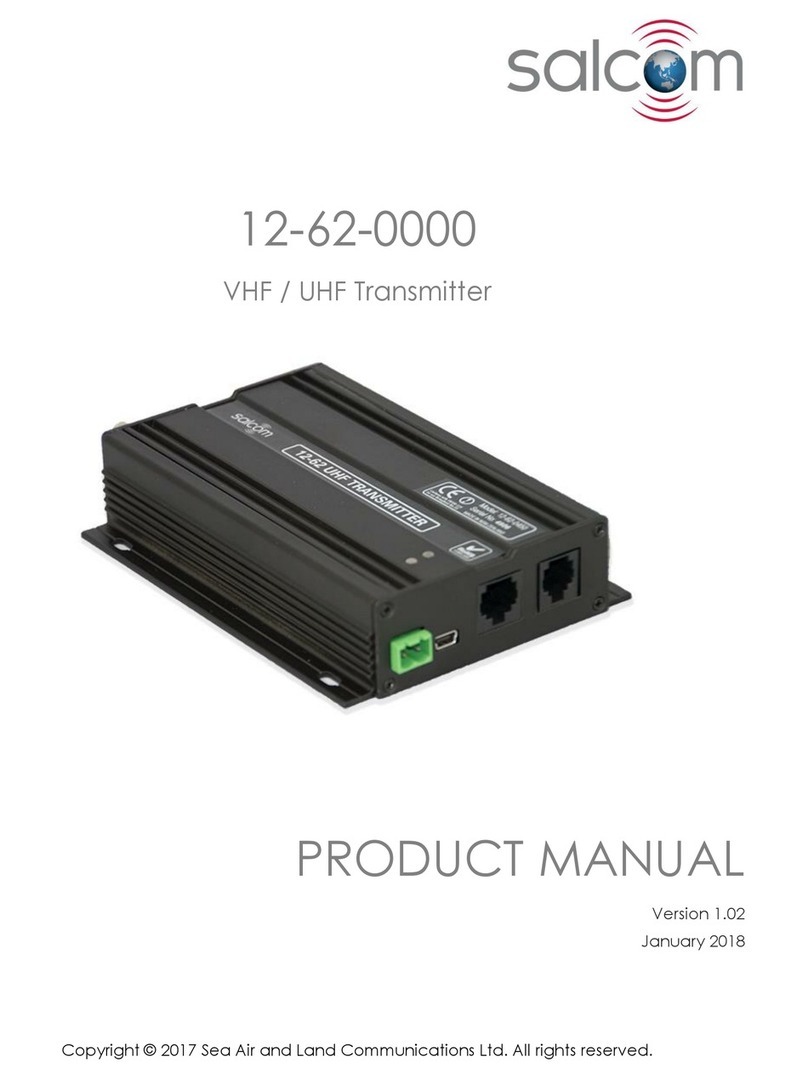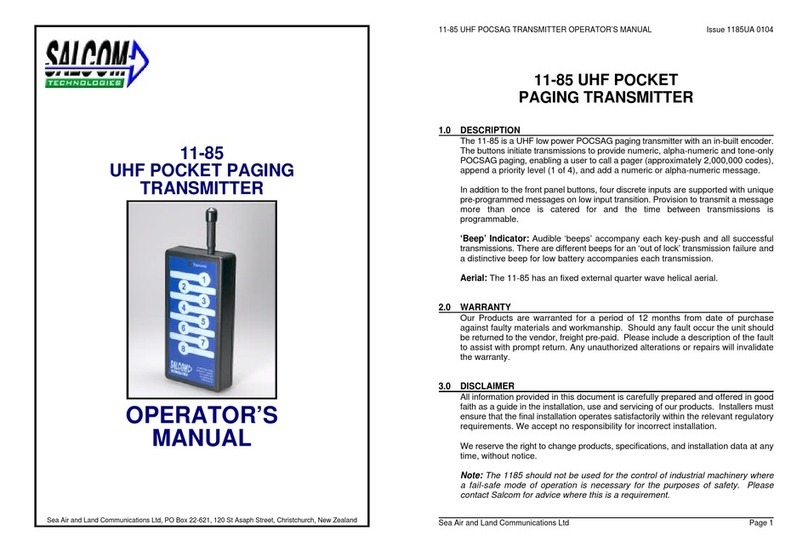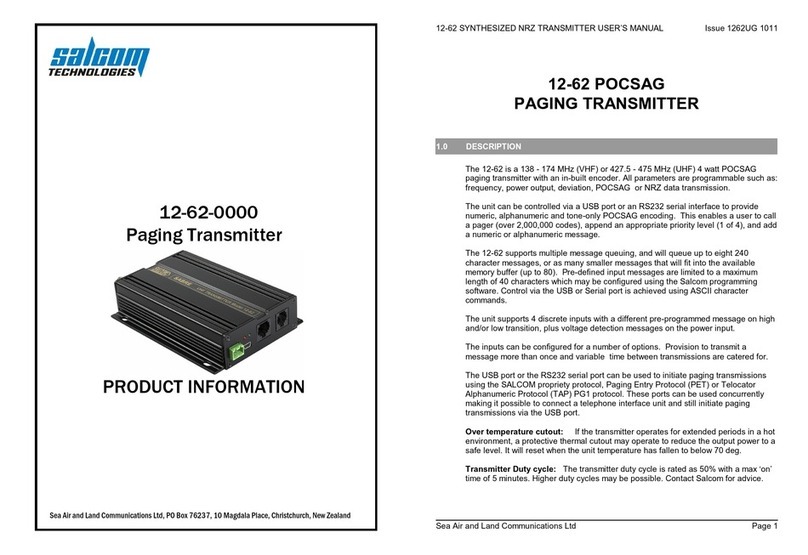SALCOM 11-08 MULTI-STATUS ALARM TRANSMITTER USER'S HANDBOOK ISSUE 1108UA 07/94 SALCOM 11-08 MULTI-STATUS ALARM TRANSMITTER USER'S HANDBOOK ISSUE 1108UA 07/94
Sea Air & Land Communications Ltd. Page 3 Sea Air & Land Communications Ltd. Page 4
TRANSMITTER The transmitter portion of the 11-08 comprises a 0.5 watt FM
transmitter operating on the 160MHz telemetry and telecontrol
frequencies with ±4kHz deviation.
The transmitter consists of a 53.3MHz Colpitts oscillator
incorporating a varicap diode for direct FM modulation. The
oscillator output is amplified by Q6 and fed via L8, C45, C47 and L7,
C44, C46 tuned to x3 oscillator frequency to the base of a class A
stage Q5 for further amplification. Q4 and Q3 further amplify the
160mHz signal and the 0.5 watt output from Q3 is tuned by L3, C27,
filtered by a two stage LP filter and delivered to the aerial connection.
The tone output from the encoder is attenuated by preset control RV3
andamplified by IC9:A which also tailors the audio frequency
response. The stabilized output voltage and the superimposed
modulation are applied to D6, the modulator diode.
TX TUNING 1Install the correct crystal.
2Connect the transmitter to a 50Oload.
3Connect the unit to +13.5V.
4Liven up the transmitter by bridging TEST3 pins 1-2.
5Using an EVM with a 100K on the probe tip for isolation, check Q7
base and emitter voltage to ensure oscillation. The volt difference
should be approx 0.4V.
6With the probe on Q5 emitter tune L7 and L8 for a peak.
7With the probe on Q4 base, tune L6 for maximum negative DC
voltage.
8With the probe on Q3 base, tune L5 for maximum negative DC
voltage.
9Peak L3 for maximum power. If 500mW or above, increase R33, or Power Consumption: .... Transmit: 13.5v, 170mA
if below 400mW decrease R33. The current drawn should be
approximately 200mA.
10 Check the unit for low voltage operation. Reduce the supply voltage
to 6v and increase it slowly until the transmitter starts. If above 9.5v
adjust the L6 inwards slightly for maximum power while
progressively reducing the supply voltage.
11 Adjust L10 for the correct transmitter frequency.
12 Enable the Test Tone encode by bridging TEST2.
13 Adjust RV3 to give ±4KHz deviation. It is critical that the
deviation be set correctly to avoid interference being generated
on adjacent channels.
14 Unbridge TEST2 and TEST3.
TEST VOLTAGES
Not Oscillating Oscillating
Q1 Emitter 12.7V
Base 12.0V
Collector 2.6V
Q3 Base 0v -0.15v
Q4 Base 0v -0.15v
Q5 Emitter 2.60v 2.70v
Base 3.35v 3.20v
Q6 Emitter 11.25v 8.50v
Base 10.50v 10.00v
Q7 Emitter 1.90v 1.95v
Base 2.65v 2.20v
Input Power: 13.5v, 140mA (Tx Opt = 480mW)
SPECIFICATIONS
Frequency: .... 160MHz, tunes 150-165
Output power: .... 500mW, 50S
.... Standby: 10mA (LED)
Modulation: .... FM, ±4kHz deviation
Spurious Outputs: .... -26dBm max.
Channel Spacing: .... 25kHz
Transmit Initiation: .... `Pulldown' <10mA
Case Dimensions: .... 170 x 105x 32mm
SALCOM reserves the right to change specifications at any time without notice.
